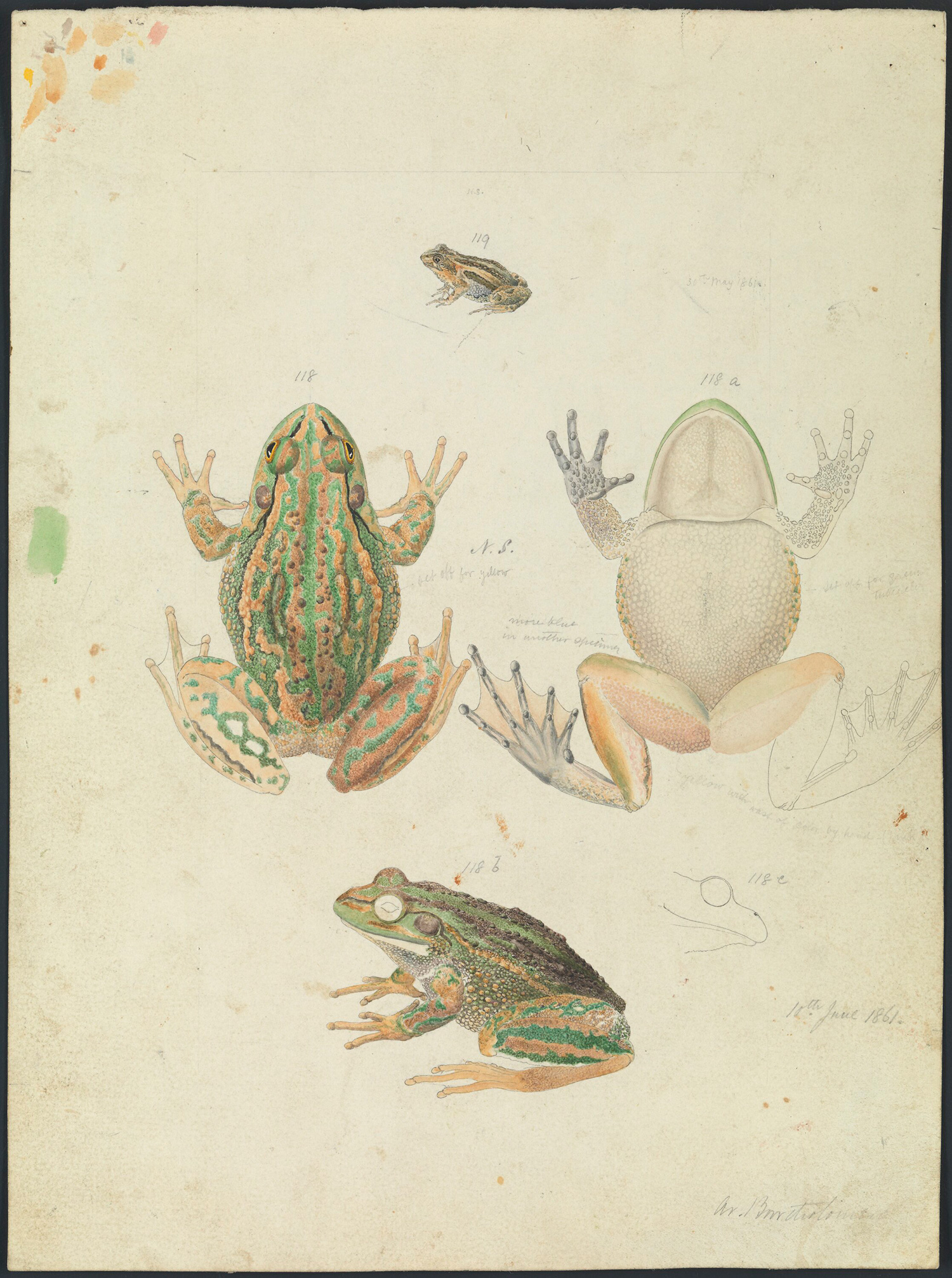Growling Grass Frog, Litoria raniformis
Plate 53. The Green and Golden Bell-Frog, Ranoidea aurea (now known as the Growling Grass Frog, Litoria raniformis) found in Carlton
This is one of the most beautifully colored Frogs known, but varies greatly; in early summer it is usually of the richest verdigris-, or pea-, yellow, shining with bright golden-bronze metallic lustre in various parts. Other specimens agree with the above, but have a variable number of spots and streaks of dark-purple on the green of the back and sides; while some few are dark-brown or almost black on the head, back, and sides, where the green color is usually seen; and these often have the spots and streaks with a strong metallic lustre of golden-bronze, the green only seen on the thighs and legs, where it has a bluer hue than on other parts of the body. These extremes of bright-green and blackish-brown change one into the other at different times in one individual. For instance the brown specimen, fig 2 on our plate, turned green before the drawing was quite finished; and the beautiful green specimen, fig.1a, escaped after the drawing was colored, and could not be found for some days, when, finding something soft under my foot, I picked up what I thought was an old brown kid glove, and found it was my sitter for the portrait, and put him again into his glass, where he died the next day, first changing into his former vivid pea-green.
In spring they are often entirely blackish above and white below, with bluish-green only on the thighs; and a specimen, entirely green above (tubercles and all), turned in a day to the uniform dark color above.
The general sound is a hoarse, prolonged croak, varied by a loud "clunk" monotonously repeated at intervals, very much like the sound of a mallet and chisel of a number of stonemasons. So like is this that when a portion of the University was being built, and a number of masons were working on a hard sonorous basalt (called bluestone by the colonist) a hundred yards from my house, a newly arrived servant, writing home an account of the busy scene, mentioned that the masons could be heard at work the whole of the moonlight nights- so completely alike was the sound of these Bell-frogs in an adjoining pond at night to the noise of the men by day. In summer the note often resembles so exactly the short "clunk" of the cattle-bells that people seeking their cows or horses at dusk in the bush can scarcely tell one from the other.
They are eaten by the natives, who, taking a torch at night, thrust a sharpened stick through as many as they choose to make a meal of, and using it like a spit, roast the collection to their taste; and no doubt they are as good as the epicures in France find the Rana viridis.
The species occurs in abundance over the whole colony, wherever stagnant water is to be found. It had not been figured of the correct colors of life before.
